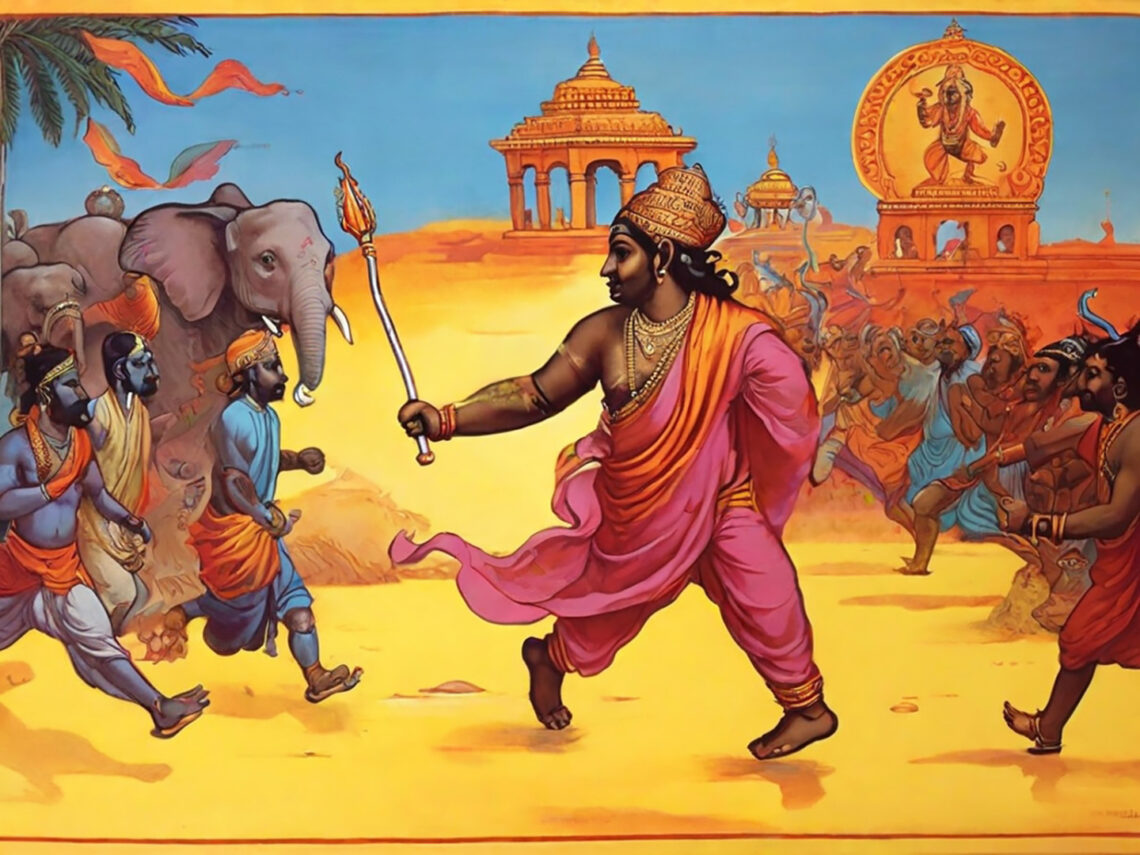
Ho’oponopono and Advaita Vedanta: Pathways to Transcendent Awareness
SHANKARA AND THE ELEPHANT
“It is only your impurity which saw non-real me flee to hide up an imaginary tree.”
Adi Shankara (725 CE)
In the landscape of spiritual practices, few ideologies present as profound a perspective on our existence as Advaita Vedanta and Ho’oponopono. These ancient wisdoms, though geographically and culturally distinct, converge on a pivotal insight: the universe we perceive is but a projection, veiled by our personal karmic-data. This realization is not just a philosophical musing but a call to action, urging us to shed the layers of illusion and embrace the divinity within us.
Advaita Vedanta: The Non-Dualistic Perspective
Advaita Vedanta, a school of Indian philosophy, posits a non-dualistic view of existence. Its core teaching is that our individual self (jīva) and the universal self (ātman) are fundamentally the same, both manifestations of Brahman – the ultimate reality. This reality transcends our ordinary perception, which is clouded by māyā, or illusion. The individual’s journey, according to Advaita, is to pierce through this veil of illusion, realizing their true nature as Brahman. This understanding is not just an intellectual acknowledgment but an experiential awakening, freeing one from the cycles of birth, death, and rebirth.
Ho’oponopono: The Hawaiian Path of Correction
Parallel to this is the Hawaiian spiritual practice of Ho’oponopono. Morrnah Nalamaku Simeona, a Hawaiian Kahuna, introduced this practice to the Western world, emphasizing that our experiences are projections of our inner consciousness. In Ho’oponopono, the goal is to ‘correct an error’ – but this error is not external circumstances or relationships. It’s the misidentification with our egoic selves instead of recognizing our true identity as part of Divinity. The practice involves a process of reconciliation and forgiveness, primarily directed within, to cleanse the karmic-data that clouds our perception of reality.
Neo Advaita and Advaita Vedanta: A Modern Interpretation
The contemporary Neo Advaita movement simplifies this profound understanding into a more accessible form. It suggests that simply by accepting what is, one can enjoy life without the burden of personal identification. This approach, however, has drawn criticism for its oversimplification and lack of guidance on the path to realization. Critics argue that Neo Advaita, while opening doors to non-dualistic thinking, lacks the depth and rigor of traditional Advaita Vedanta, which advocates practices like meditation for self-awareness.
Advaita Vedanta, Ho’oponopono, and the Illusion of Self
Both Advaita Vedanta and Ho’oponopono challenge the notion of a separate, individual self. In Advaita, this realization comes through the discernment of the non-duality of ātman and Brahman. In Ho’oponopono, it is through the cleansing of karmic-data and recognizing ourselves as extensions of Divinity. These paths, although distinct in practice, converge on the same truth – the illusion of the separate self and the journey towards recognizing our inherent oneness with the universe.
The Path to Liberation: A Convergence of Wisdom
What emerges from these teachings is a shared path to liberation. It’s a journey inward, a quest to dissolve the ego and awaken to our true nature. Whether it is through the meditative practices of Advaita Vedanta or the cleansing rituals of Ho’oponopono, the goal remains the same: to transcend the illusion of separateness and experience the unity of all existence.
In a world increasingly fragmented, the wisdom of Advaita Vedanta and Ho’oponopono offers a beacon of unity. It
counsels us to look beyond the superficial divisions and to recognize the interconnected fabric of existence. This journey of realization is not just a solitary pursuit but a collective awakening to the oneness of life.
Embracing the Divinity Within
Both Advaita Vedanta and Ho’oponopono emphasize the discovery of our divine essence. In Advaita, this is achieved through self-inquiry, a relentless questioning of ‘Who am I?’ that leads to the recognition of the self as Brahman. In Ho’oponopono, it involves a continuous process of cleansing and releasing the karmic burdens, thereby aligning ourselves with Divinity. This alignment is not about seeking an external deity but awakening to the divine presence within us.
The Role of Karma and Cleansing
Karma plays a central role in both philosophies. In Advaita Vedanta, it’s the accumulation of actions and their consequences across lifetimes that veil our true nature. In Ho’oponopono, it’s the data or memories that cloud our perception of reality. The process of cleansing in Ho’oponopono is akin to the Advaitic journey of burning away ignorance through knowledge. Both paths acknowledge that liberation is not about changing the external world but transforming our inner landscape.
Beyond The Illusion of Separateness
The illusion of separateness is the root cause of suffering in both teachings. Advaita Vedanta illustrates this through the concept of Maya, which makes us perceive the world as diverse and divided. Ho’oponopono addresses this through the idea that our perceptions are projections of our inner state. By acknowledging and cleansing these projections, we can return to a state of harmony and unity with all that is.
The Journey of Self-Realization
For the practitioner, whether following Advaita Vedanta or Ho’oponopono, the journey is deeply personal yet universally resonant. It involves peeling back the layers of ego, confronting deeply ingrained patterns, and surrendering to the flow of life. This path is not always easy, as it challenges our most fundamental beliefs and perceptions, but it is profoundly rewarding, leading to peace, understanding, and a deep sense of connectedness with the cosmos.
A Unified Vision of Reality
In essence, both Advaita Vedanta and Ho’oponopono offer a unified vision of reality, one that transcends the apparent duality and conflict of the physical world. They remind us that at our core, we are not fragmented beings struggling in isolation but expressions of a singular, boundless consciousness. Embracing this vision can not only transform individual lives but can also usher in a new era of understanding and peace, grounded in the recognition of our shared divinity and oneness with all existence.


You May Also Like

Ho’oponopono: Beyond The Mantra, Into The Cosmos

The Voyage to the Future: Navigating Life with AI and Ho’oponopono
